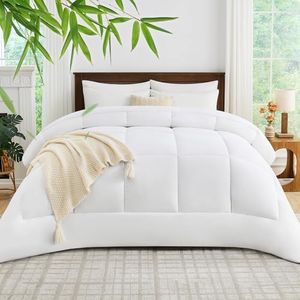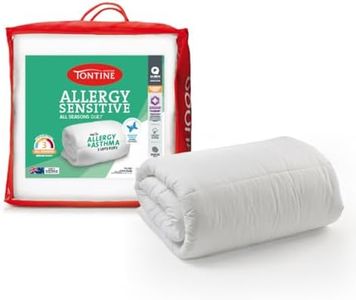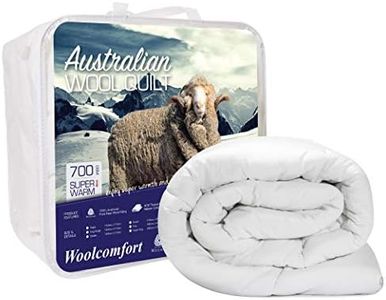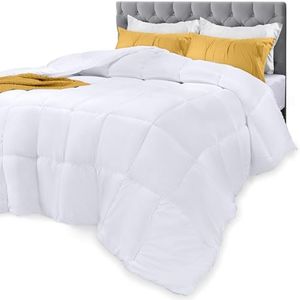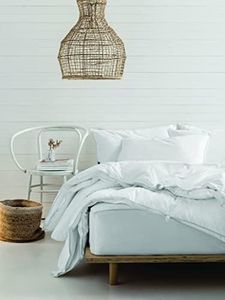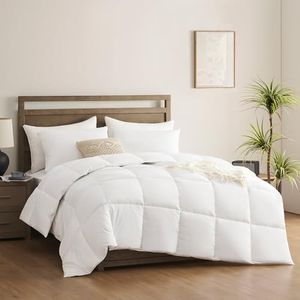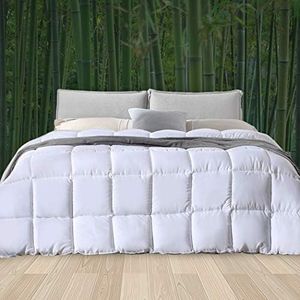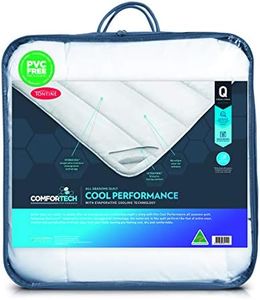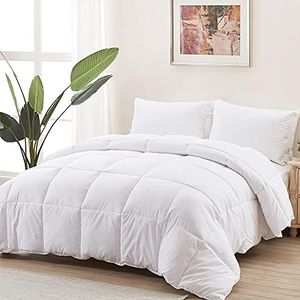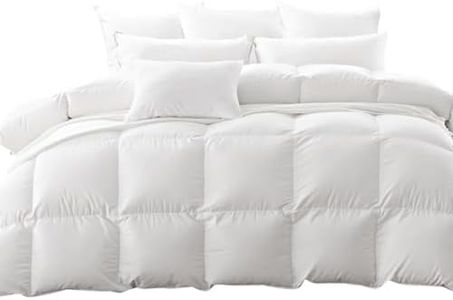We Use CookiesWe use cookies to enhance the security, performance,
functionality and for analytical and promotional activities. By continuing to browse this site you
are agreeing to our privacy policy
10 Best Duvet Inserts
From leading brands and best sellers available on the web.By clicking on a link to a third party's website, log data is shared with that third party.
Buying Guide for the Best Duvet Inserts
Choosing the right duvet insert can make a big difference in how comfortable you feel during sleep. The best insert for you will depend on your sleeping environment, personal warmth preferences, and any sensitivities you may have. Duvet inserts come in a range of materials, sizes, warmth levels, and quality grades, so understanding these key features will help you narrow down your options and select the one that best meets your needs for a good night's rest.Fill MaterialFill material refers to what is used inside the duvet insert to provide warmth and loft. The most common options are down (the soft feathers from ducks or geese), down alternative (synthetic fibers designed to mimic down), and sometimes wool or silk. Down is known for being lightweight and very warm, but it may not suit people with allergies, while down alternative is hypoallergenic and easier to care for but might be bulkier. Wool is great for temperature regulation and managing moisture, and silk is light and naturally hypoallergenic. When choosing, consider your personal preferences regarding texture, allergies, and how much warmth you need—down for luxurious warmth, down alternative for easy care and allergies, wool for breathability, or silk for a lighter feel.
Warmth Level (Weight)The warmth or weight describes how much insulation the insert provides, usually classified as lightweight, all-season, or heavyweight. Lightweight inserts are best for hot climates or people who get warm easily at night. All-season inserts strike a balance, designed for year-round comfort. Heavyweight inserts are best for cold climates or people who like extra coziness. To decide which is right for you, think about how warm you tend to feel when you sleep, the temperature in your bedroom, and the local climate. Picking an insert that matches your needs ensures restful sleep without overheating or feeling too cold.
Construction (Baffle Box vs Sewn-Through)Construction refers to how the insert is stitched together, which affects how evenly the fill stays distributed. Baffle box construction uses fabric walls inside the duvet to keep the fill from shifting, providing even warmth and loft. Sewn-through construction means the top and bottom of the duvet are stitched directly together, which can create cold spots where the fill is compressed. Baffle box is generally better for higher warmth and even fill, while sewn-through can be lighter and less expensive. Your choice should depend on whether you want maximum, consistent warmth or don't mind lighter, sometimes cooler spots.
Thread Count and Fabric CoverThe thread count and type of fabric used for the cover help determine softness, durability, and breathability. Thread count measures how many threads are in each square inch of fabric—with higher counts being softer and better at containing fill, but sometimes less breathable. Typical choices for fabric are cotton, microfiber, or blends, with cotton being very breathable and comfortable. For sensitive skin or sleepers who overheat, a cotton cover with a moderate thread count is often best; for preventing feathers from poking out or maximizing softness, a higher thread count can be helpful.
SizeDuvet inserts come in sizes that generally match standard bed dimensions: Twin, Full/Queen, and King/California King. Choosing the right size ensures that your duvet cover fits properly and that the insert covers your bed adequately. Some people prefer an oversized insert for added coziness or to share the duvet more easily. Size should match both your bed's measurements and your comfort preferences.
Care and MaintenanceCare instructions will affect how easy it is to keep your duvet insert clean and fresh. Some inserts are machine washable, while others need dry cleaning or spot cleaning. Down alternative and synthetic inserts are usually the easiest to wash at home, while real down may require more special care. If you prefer low-maintenance bedding or want to wash your insert frequently due to allergies, kids, or pets, look for one that is labeled as machine washable.
